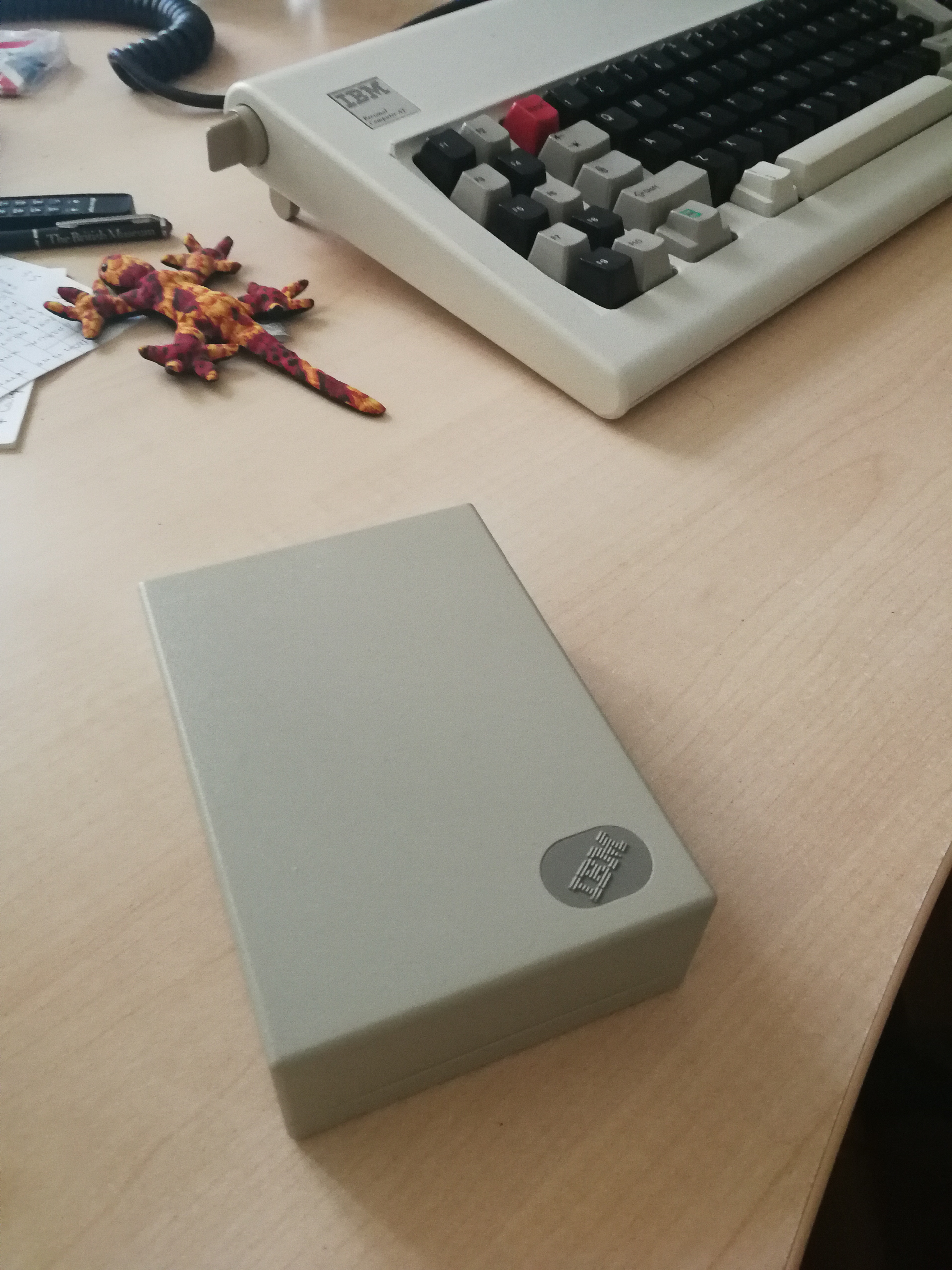Page 1 of 1
Who wants to calc for ever?
Posted: 08 Feb 2020, 13:06
by dcopellino

- IMG_20200208_124752.jpg (4.36 MiB) Viewed 1754 times

hello everyone!!!
I gathered this strange object that doesn't work, tough. I'd like to transform it in an independent calculator, but I haven't got any idea how to start it up? I thought to begin reading some instructables on DIY blogs but I wasn't able to collect some more info about this ibm m 3 numpad, most likely sidecarting an ibm M4 space saver keyboard, even if it came with its own combined numpad.
Who is willing to waste some of his time so that I can transform this useless paper holder in a full functional display calculator?
Any hints, help, step by step tutorial will be very appreciated....
Looking forward to reading from you... THANKS IN ADVANCE
Re: Who wants to calc for ever?
Posted: 08 Feb 2020, 14:28
by XMIT
It's a wild guess but this seems like a numpad that could have been sold for an IBM portable computer in the early 90s. That would explain the cover. That looks like a PS/2 port, which could be primary connection, or pass-through for a mouse.
The raw matrix - five rows and four columns - is exposed through that ribbon connector. I'd get a Pro Micro in there running TMK or QMK. How much do you care about the original PCB? You could run wires from convenient locations on the original PCB to the Pro Micro. That would let you use it as a numpad over USB.
If you want a display calculator - first you need to figure out which display and where to put it. Maybe in the lid? Is there enough space? I'd Google around for some hobby calculator project and see how you can adapt this.
Good luck!
Re: Who wants to calc for ever?
Posted: 08 Feb 2020, 15:05
by sharktastica
I believe the M3 did sidecart the L40SX. If you pull off a keycap, it should have Lexmark's buckling rubber sleeves.
IBM has released a lot of similar looking devices, including the one I have:



This one is the IBM ThinkPad 560 Numeric Keypad Option (P/N 95F5446) from the later '90s. Instead of an SDL port, it's got a straight PS/2 cable, and it doesn't work, although the pass-through for the mouse does work. I've tried it with a standard PS/2 converter, Soarer's (mouse doesn't work with this), and on my ThinkPad 570 that also has a PS/2 port designed for this, and I've never been able to get actual keypad working. It does have a very bad 'electrical' smell though, so I think something's blown on the mainboard. Anyway, I think these keypads are pretty cute.
Anyway, as XMIT said, it should be simple enough to tack on a microcontroller to these things to get it working on a modern PC. Parasiting an internal Soarer's or making a circuit around the membrane itself like people have done to IBM Wheelwriter typewriter keyboards to USB mod them are valid options that could be applicable to one of these too. As for making it into a calculator, I believe Google should find you some good tutorials with standard membrane keypads that you could adapt. Cheap-enough Arduino 'starter' packs with the cables, LCD module, breadboard and microcontroller are available to get you started too.
Re: Who wants to calc for ever?
Posted: 08 Feb 2020, 17:37
by dcopellino
Thanks a lot for your supporting replies xmit and sharktastica. I didn't know there was a black version that would confirm xmit's version about numpads expressly made for portable computers in the early 90s, even tough I don't remember to have ever seen ivory/beige laptops. I tried to get it work unsuccessfully connecting the M3 by the rj45 cable to my m4-1. Unfortunately I haven't a double male ps/2 cable to test it on the other rear port. I'll give a try to your suggestions concerning Arduino 'starter' packs bypassing the original circuitry in order to get it acting as a calc with the display located in the lid. I think there would be enough room also for a battery. It's quite intriguing as project.


